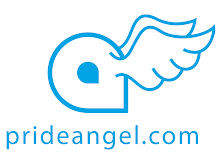Monday, 21 May 2012
Sperm bank donors - A genetic roll of the dice?
Children conceived with donated sperm from sperm banks are struggling with serious genetic conditions inherited from men they have never met.
Sharine and Brian Kretchmar tried a number of medical treatments to conceive a second child. After a depressing series of failures, a doctor finally advised them to find a sperm donor. For more than a year, the Yukon, Okla., couple carefully researched sperm banks and donors. The donor they chose was a family man, a Christian like them, they were told. Most important, he had a clean bill of health. His sperm was stored at the New England Cryogenic Center in Boston, and according to the laboratory’s website, all donors there were tested for various genetic conditions.
So the Kretchmars took a deep breath and jumped in. After artificial insemination, Sharine Kretchmar became pregnant, and in April 2010 she gave birth to a boy they named Jaxon. But the baby failed to have a bowel movement in the first day after birth, a sign to doctors that something was wrong. Eventually Jaxon was rushed to surgery. Doctors returned with terrible news for the Kretchmars: Their baby appeared to have cystic fibrosis.
“We were pretty much devastated,” said Sharine Kretchmar, 33, who works as a nurse. “At first, we weren’t convinced it was cystic fibrosis, because we knew the donor had been tested for the disease. We thought it had to be something different.” But genetic testing showed that Jaxon did carry the genes for cystic fibrosis. Sharine Kretchmar had no idea she was a carrier, but was shocked to discover that so, too, was the Kretchmars’ donor. His sperm, they would later discover, was decades old, originally donated at a laboratory halfway across the country and frozen ever since. Whether it was properly tested is a matter of dispute.
Sadly, the Kretchmars’ experience is not unique. In households across the country, children conceived with donated sperm are struggling with serious groenetic conditions inherited from men they have never met. The illnesses include heart defects, spinal muscular atrophy, neurofibromatosis type 1 and fragile-X syndrome, the most common form of mental retardation in boys, among many others. Hundreds of cases have been documented, but it is likely there are thousands more, according to Wendy Kramer, founder of the Donor Sibling Registry, a website she started to help connect families with children who are offspring of the same sperm donor.
Donated eggs pose a risk as well, but the threat of genetic harm from sperm donation is arguably much greater. Sperm donors are no more likely to carry genetic diseases than anybody else, but they can father a far greater number of children: 50, 100 or even 150, each a potential inheritor of flawed genes, and each a vector for making those genes more pervasive in the general population. The scale of the problem is only now becoming apparent with the advent of online communities like Kramer’s. “There needs to be oversight, and some regulation of the industry,” she said.
Genetic testing optional
It is not known how many children are born each year using sperm donors, because mothers of donor offspring are not required to report their births. By some estimates, there are more than 1 million children in this country conceived with donated sperm or eggs. The Food and Drug Administration requires that sperm donors be tested for communicable diseases, but there is no federal requirement that sperm banks screen for genetic diseases. Some of the better ones do anyway, in accordance with guidelines promulgated by organizations like the American Society for Reproductive Medicine, which encourages sperm banks to test donors for conditions like cystic fibrosis and mental retardation when there is a family history of the disease. Generally, the donor himself is tested, not his sperm.
But compliance with those guidelines is not obligatory, and genetic testing practices vary widely across the United States. Critics of the industry are calling for mandatory and consistent medical and genetic testing of all donors. “In this day and age, when you have genetic testing available for about $200, there’s no reason sperm banks can’t provide this for clients,” Kramer said.
The fertility industry, however, has long resisted the idea.
“Human reproduction is an inherently risky proposition, and it always will be, so it’s impossible to remove all the risk and uncertainty of reproducing,” said Sean Tipton, director of public affairs for the American Society for Reproductive Medicine. “You’ll never be able to catch everything. As the technical capabilities to do genetic testing and screenings improve, the banks will do that. But it will be incredibly expensive to test for everything.”
A lack of regulatory record-keeping also makes it difficult for sperm banks to warn related families, or even donors, when a genetic illness is discovered in one or more children. And donor families are not required to report births or illnesses to the sperm banks. Since the clinic has no way to know a donor’s sperm is flawed, it may continue to be sold long after problems have surfaced.
Pamela Callum, a genetic counselor at California Cryobank, the largest sperm bank in the country, recently discovered that a donor to the bank had passed on the gene for neurofibromatosis type 1, or NF1, to five children. The case was reported in the February issue of the journal Human Reproduction. NF1 can cause benign tumors along nerves in the skin, brain and other areas, and it contributes to learning problems and an increased risk of brain tumors, leukemia and other cancers.
“There were two other children who had been diagnosed with the disease, but the parents never told us,” Callum said. “If we had known earlier, we may have been able to take that donor off the catalog earlier.” “We’ll never be able to eliminate genetic diseases,” she added. “It’s just not possible. That’s why follow-up is so important.”
Forming national registry
Several of the largest sperm banks in the country are attempting to create a national donor gamete registry, a centralized and permanent repository for the records of egg and sperm donors, said Scott Brown, communications director for California Cryobank, a leader in the effort. Such a registry might help prevent the spread of genetic diseases among donor children by providing a way for parents to report children’s illnesses to their sperm banks, thus allowing banks to weed out donors who may be carriers.
Max Jackson, 18, of San Rafael, Calif., discovered that he had inherited a deadly heart defect known as hypertrophic cardiomyopathy, or HCM, when the family of one of his donor siblings — a child conceived from the same sperm donor — reported the illness to the sperm bank. The donor was tested and found to be a carrier of the disease.
At least eight other children conceived with the donor’s sperm have HCM, a thickening of the heart muscle that makes it harder to pump blood and can cause sudden cardiac death. Two of them have pacemakers now, and a 2-year-old donor child died of the disease, according to a case report in The Journal of the American Medical Association.
Jackson, an aspiring rapper, must take medicine to control the illness, and he has to keep his heart rate below a certain level or risk cardiac arrest. (HCM is a leading cause of heart attacks in young athletes.) He recently met his sperm donor for the first time, and learned that the man and his wife also have a child with HCM.
“He said he felt horrible for giving me the disease,” Jackson said. “I think I’ve been less scared of death since I found out I have HCM. It made me realize how easily we can die. I can die when I’m just running.” The lives of the Kretchmars have been irrevocably altered by their son’s illness. Cystic fibrosis is a progressive disorder that causes thick, sticky mucus to build up in the lungs, digestive tract and other areas of the body. The life expectancy of someone with the disease is about 37 years.
Every day, Jaxon, now 2, must take more than 20 pills. (He learned how to swallow pills before he could walk, his mother said.) The boy needs several nebulizer treatments daily, and he must regularly don a special vest that shakes his torso to help loosen the congestion in his body. The Kretchmars have sued New England Cryogenic Center, the sperm bank that sold them the sperm used to conceive Jaxon. As it turns out, the sperm was purchased from Rocky Mountain Cryobank in Jackson, Wyo., which closed a few years ago. The sperm was donated more than 20 years ago.
A spokeswoman for the New England Cryogenic Center, Jacalyn Fallman, said her bank received documentation from Rocky Mountain Cryobank that the donor had been tested for cystic fibrosis, but added, “It would appear that testing done by Rocky Mountain was faulty.” “Someday I have to explain to Jaxon that the pain and difficulties that he endures every day are unnecessary and should have been prevented,” Sharine Kretchmar said. “It is a helpless feeling to know that I can’t take away my child’s pain.”
Subscribe to:
Post Comments (Atom)



No comments:
Post a Comment